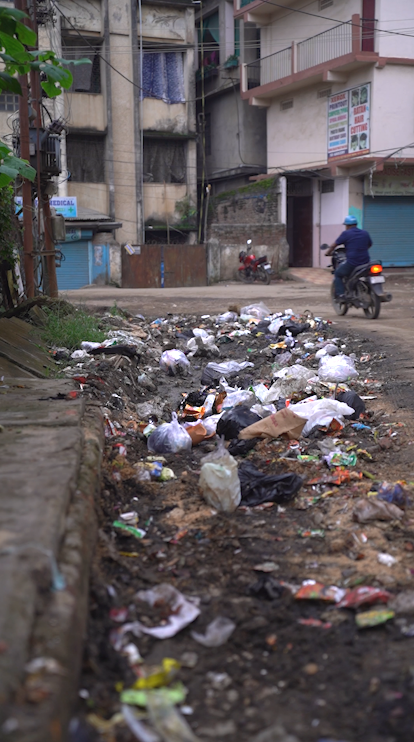SUNDAY, JUNE 08, 2025
- Home
- Eyesore: Plastic waste mars Dimapur cityscape
Eyesore: Plastic waste mars Dimapur cityscape
Published on Jun 4, 2025
Share
- DIMAPUR — Even after 52 years of observing World Environment Day annually on June 5, the world continues to struggle with plastic waste and pollution. The United Nations Environment Programme recorded that the world generated an estimated 400 million tonnes of plastic waste last year.
- This year’s theme, ‘’, reflects the ongoing effort to address plastic waste, which has become a significant contributor to pollution, biodiversity loss and climate change. The general acceptance of different forms of plastic—expensive or inexpensive—by society has made plastic globally widespread.

Waste, primarily plastic, openly dumped by the public at an undesignated site in Dimapur, as seen on the eve of World Environment Day 2025. (EM Images)
- Dimapur, the commercial hub of Nagaland, continues to struggle with waste management, with the district’s daily waste collection reported at 1,000 metric tonnes. Among the 39 urban local bodies in the state—three municipalities and 36 town councils—Dimapur generates the highest amount of waste.
- Roads, footpaths and market areas in Dimapur are an eyesore, as they are largely littered with trash, mostly plastic waste.

Waste, primarily plastic, openly dumped by the public at an undesignated site in Dimapur, as seen on the eve of World Environment Day 2025. (EM Images)
- According to the Dimapur Municipal Council (DMC) in an earlier statement, Midland, Supply Colony, Khermahal Road, Railway Bazaar, and Eros Lane are hotspots for poor sanitation. In addition to these, a stroll through the city shows that Army Supply Road, Kalibari Road and Sewak Road remain an eyesore despite continuous efforts from the DMC.
- On the eve of World Environment Day, the city remains strewn with plastic waste at undesignated locations, on roadsides and outside shops.
Also read: Waste audit flags plastic pollution as major threat in Dimapur
Segregation at the heart of Dimapur’s waste problem

